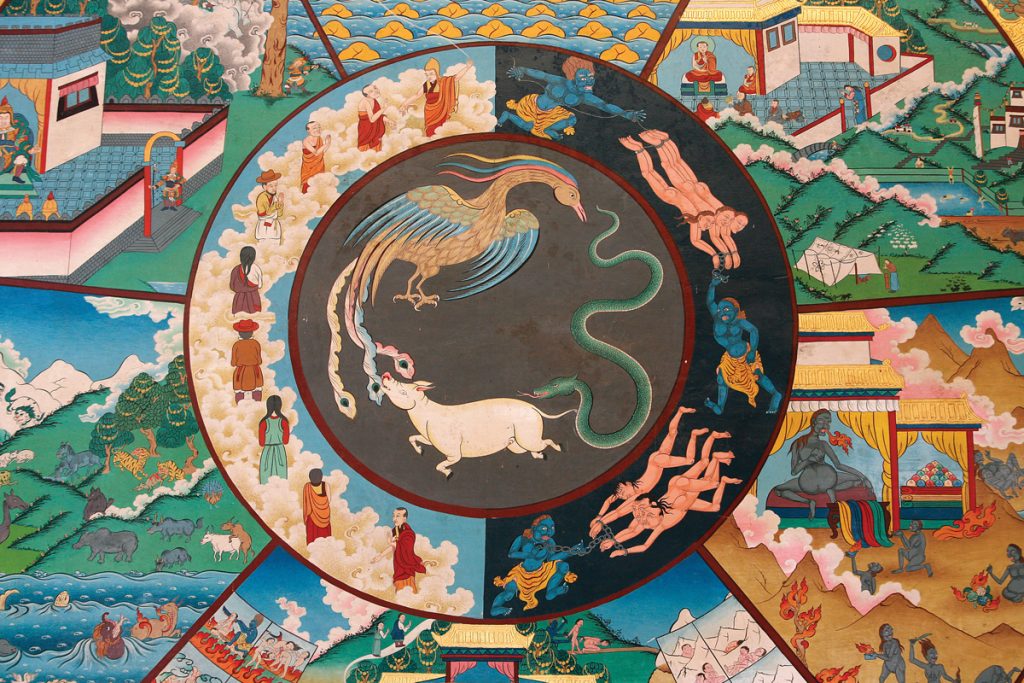What Does Samsara Mean in Buddhism?
The word samsara is based on a verbal root with the sense “to flow” and means the “flowing-on” of the stream of consciousness from one moment to the next and from one lifetime to another. The Buddha is recorded as saying that the origin of this process is “beyond reckoning,” or fundamentally unknowable. He offered a series of metaphors to illustrate a vast scale, such as eons as many as the grains of sand in the Ganges river bed, only to say that the process goes back even farther than that.
How Is Samsara Represented in Buddhism?
In samsara, beings are viewed as wandering through various realms of existence, viewed as “stations” upon which consciousness is established and then falls away each time one dies. Some of these are heavenly, while others are hellish, and one moves through them according to the quality of one’s intentions and actions. From the modern perspective this may be viewed as a good thing, as we get to live on past this lifetime, but in ancient India “flowing on” again and again was seen more as an affliction, since we consequently experience suffering again and again. “The waters of the four great oceans are small compared to the ocean of tears you have wept for loved ones lost to illness, aging, and death” is just one of many poignant images offered in the texts.
How Does Samsara Work?
The process of rebirth is driven by delusion and desire, with “beings roaming and wandering on, hindered by ignorance and fettered by craving.” If one dies encumbered by grasping or clinging, the process will continue; but if one is able to abandon all attachment in this lifetime, then the mechanism for rebirth will no longer function. The “on-flow” of samsara ends with the “cessation” known as nirvana, wherein the influxes (asava) upon the mind of greed, hatred, and delusion are finally stopped like streams that have “dried up” (khaya).
Samsara and Nirvana in Buddhist Philosophy
As Buddhist teachings evolved over the first several generations, the distinction between samsara and nirvana increased. Various Abhidharma schools identified a strong division between the “conditioned” phenomena of our changing experience and the “unconditioned” phenomena that are “beyond this world.”
The Madhyamika philosopher Nagarjuna deconstructed this dichotomy, arguing that when all phenomena are regarded as empty (having no intrinsic nature since they are interdependently conditioned), the polarity of the two words collapses. In fact, in expressing the view that would come to dominate later forms of Mahayana and tantric Buddhism, Nagarjuna declared that “there is no distinction whatsoever between samsara and nirvana.” With this insight, the meanings of samsara and nirvana are turned inward to refer not to outer worlds, fallen or perfect, but to inner perspectives, deluded or awakened, on the world as it actually is.
Read more about the six realms of existence in Buddhist cosmology.
Thank you for subscribing to Tricycle! As a nonprofit, we depend on readers like you to keep Buddhist teachings and practices widely available.
